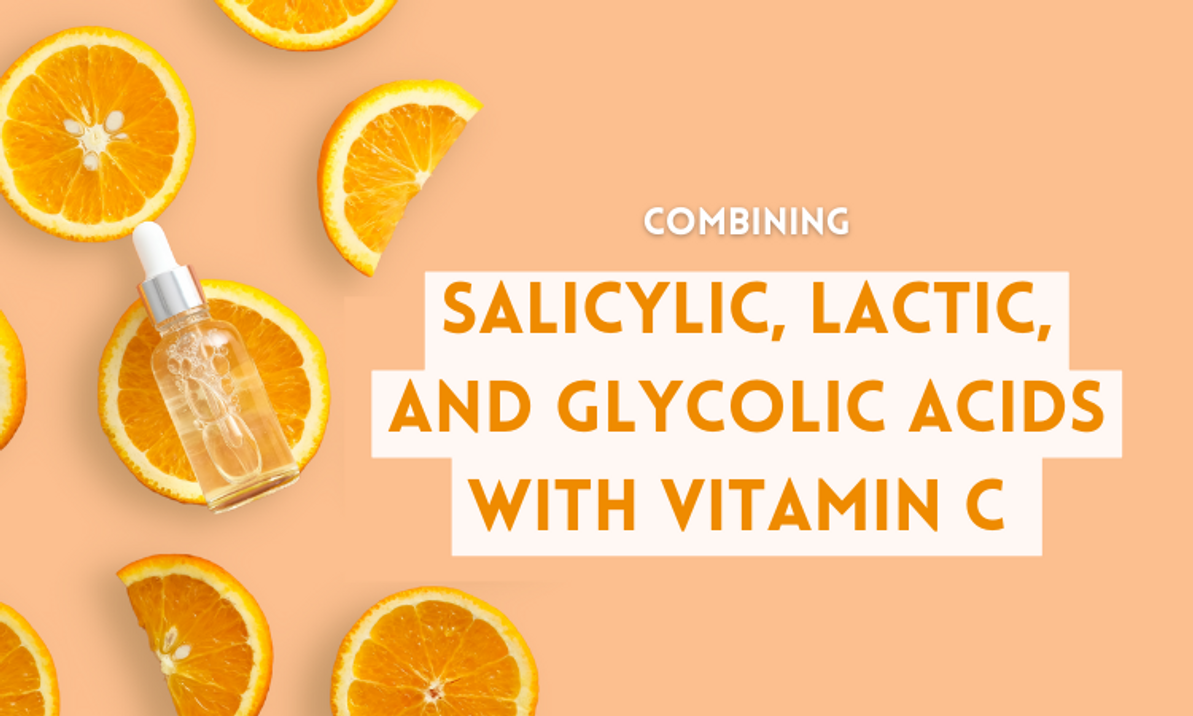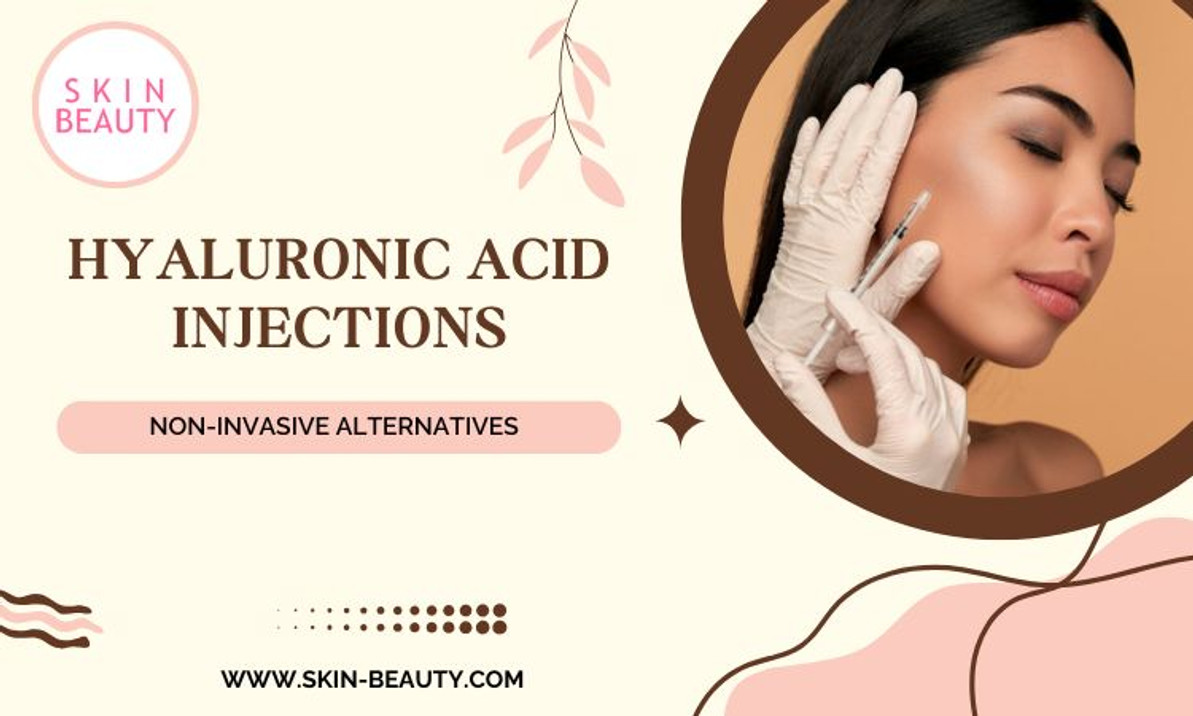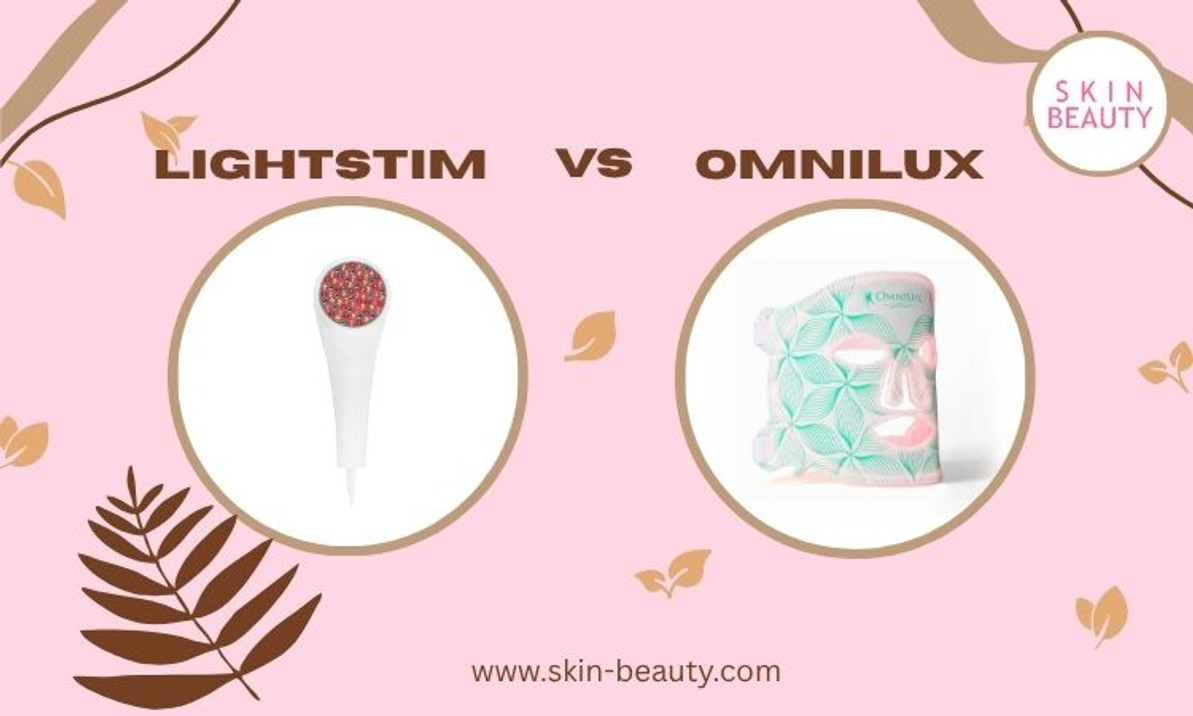Combining Salicylic, Lactic, and Glycolic acids with Vitamin C
You've heard how mixing vitamin C serums with other AHAs (Alpha hydroxy acids), and BHAs (beta hydroxy acids) can transform your skin. BUT we have also heard the warnings about mixing these since it can lead to significant skin irritation. So how do I properly use Vitamin C, BHAs, and AHAs, in my routine to achieve my skincare goals?
What are AHAs and BHAs?
Alpha and beta hydroxy acids (AHAs and BHAs) are derived from organic/natural ingredients. Alpha hydroxy acids are usually derived from sugar cane and have strong exfoliating properties. It is an excellent ingredient for normal to combination skin types. BHAs (beta hydroxy acids) are derived from willow bark extract, with the most popular BHA being salicylic acid. BHAs features anti-inflammatory and antibacterial properties, so this acid is so heavily used in skincare for acne-prone skin.
What is Vitamin C?
Vitamin C (also known as ascorbic acid) is an antioxidant that neutralizes free radicals, stimulates collagen production, and can help brighten your skin tone. It is not an ingredient recommended for sensitive skin. Vitamin C is a very reactive ingredient, so it can easily lose its antioxidant properties when exposed to heat, light, air, or other chemicals.
Combining AHAs and BHAs with Vitamin C
When it comes to mixing both AHAs/BHAs and vitamin C, we need to clarify a couple of things.
- Mixing BOTH AHAs/BHAs and vitamin C can irritate your skin, but this may not be the case for everyone. Make sure to patch test your products first.
- Aside from potentially causing skin irritations, LAYERING acids (AHAs and BHAs) on vitamin C will destabilize the vitamin C and become useless.
Many professionals advise against using these ingredients together because most people don't know how to combine and use these ingredients properly. Technically, you can still use them together, but learning how is essential.
If you are to use these ingredients in the same routine, you must alternate them to get the most benefits. This means that you should use your vitamin C in the morning, night, or on other days. Avoid using AHAs/BHAs and vitamin C simultaneously in the same routine, especially when using concentrated forms (think serums). If you really must use these ingredients simultaneously, make sure that you wait until they are fully absorbed into the skin before applying the following product.
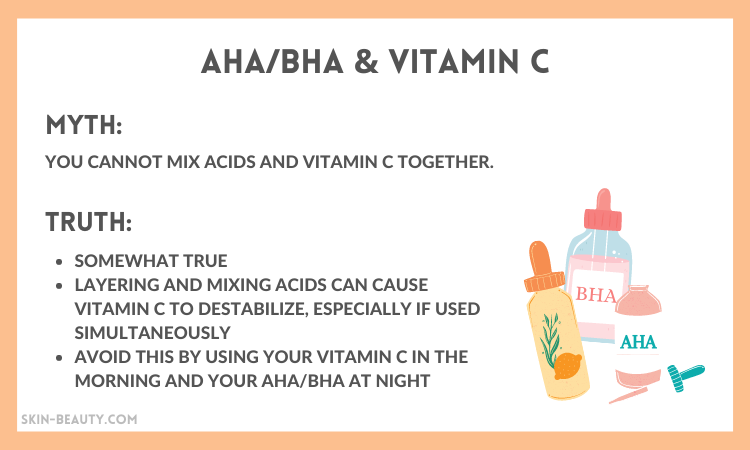
Salicylic Acid and Vitamin C
The best way to use salicylic acid and vitamin C is to
- Use them at different times
- Use them on different days
- Use them together*
Using your vitamin C product in the morning and then your salicylic acid at night is an example of using these ingredients. This method works great if you have sensitive skin and need to build a tolerance or you are just starting to incorporate either ingredient in your routine.
If you want to take it slow and let your skin fully adjust to a new routine, use these ingredients every other day. Use your vitamin C one day and salicylic acid the next day. Still, alternating use lets your skin adjust to new ingredients, and it can make it easier to see any potential reactions you may have to either ingredient.
*Although we don't recommend this, you can simultaneously use salicylic acid and Vitamin C. The key is knowing how to layer them and waiting for the product to absorb them thoroughly. Salicylic acid lowers the skin's pH level, and vitamin C is most effective with lower pH levels. So apply your salicylic acid product first and let it fully sink into the skin (a few minutes), then you can use your vitamin C product. Applying them too close together can dilute the ingredients and make them ineffective.
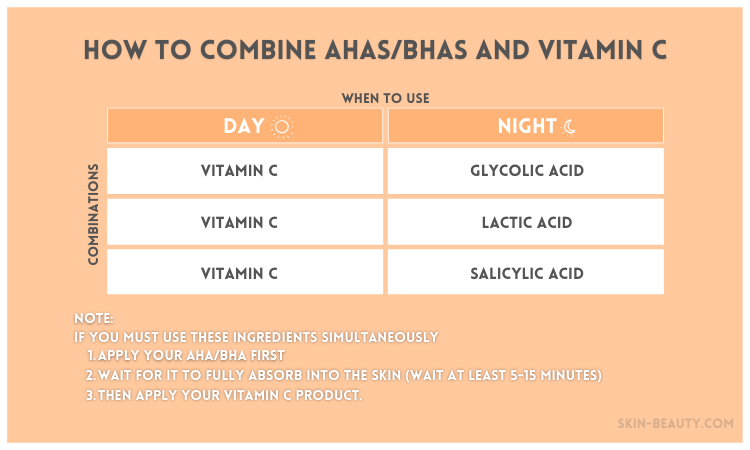
Glycolic Acid and Vitamin C
Glycolic acid is the strongest of the commonly used AHAs. However, this combination of AHA and vitamin C should be used with caution as glycolic acid is known to cause a lot of skin irritation. That being said, glycolic acid is a potent exfoliant that clears dead and dull skin cells. Combining that with Vitamin C's brightening and cell renewing effects, you can achieve maximum skin care results.
The best way to combine these ingredients is to alternate daily use with all this in mind. Our favorite method is to use a glycolic acid toner or toner pad and apply a vitamin C serum in the morning. Applying them at different times lessens the ingredients' chances of diluting or creating a counterproductive reaction for your skin. Remember that glycolic acid can increase your skin's sensitivity to the sun, so always apply SPF.
Lactic Acid and Vitamin C
Although lactic acid is one of the milder AHAs, if not appropriately combined, it can dilute vitamin C . This combination can be sensitive and skin-friendly. However, we do recommend doing a test patch to be sure. The best way to use lactic acid and vitamin C together is to use the acid at night and your vitamin C in the morning.
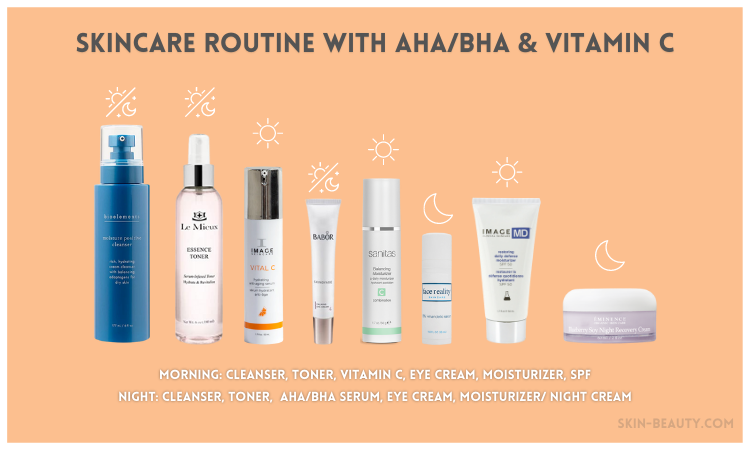
Recent Posts
-
Hyaluronic Acid Injections
Hyaluronic Acid Injections: What to Know & Non-Invasive Alternatives That Actually Work In the p …Jun 17th 2025 -
Kojic Acid Creams
My Kojic Acid Journey: How One Ingredient Transformed My Skin (And the Best Kojic Acid Creams to Try …Jun 11th 2025 -
LightStim vs. Omnilux
LightStim vs. Omnilux: My Real LED Skincare Results & Which One I Recommend LED light therapy&nb …Jun 3rd 2025

